PLC Training Panel(II)
Categories: Automation TechnologiesInside a laboratory for automation technologies, the trainer is the necessary tool for the high level training of technicians operating in modern process industry. Totally carried out with industrial...
Product
Description
Inside a laboratory for automation technologies, the trainer is the necessary tool for the high level training of technicians operating in modern process industry. Totally carried out with industrial components, the trainer enables the development of a solid experimentation and a high content of knowledge on PLC programming and the solution of more complex problems related to automation. The training program includes a wide range of applications in:
• Industrial installations
• Robotics
• Automation with conveyor
• Process controls with PID techniques
The PLC installed in the trainer is one of the most powerful and used in industry. It provides many digital inputs and outputs accessible by means of terminals of two diameters (ø 4 mm and ø 2 mm) present on the front panel of the trainer. Twelve special digital inputs are used for fast counting, process alarms, frequency measurement and positioning. As concerns the digital outputs, these are available as relay outputs or transistor outputs for all those applications which need quicker timing. The logic state of the digital inputs and outputs is displayed via LED diodes on the PLC. Four analog inputs, one input for Pt100 temperature probe and two analog outputs are available for exercises involving process control. With four rotating potentiometers and an inner stabilizer, you can adjust the voltages or currents level at the analog inputs. In this way, no external power supply is necessary for the generation of references.
TRAINING PROGRAM:
The trainer enables the theoretical analysis and the experiments on the following main exercises:
• PLC architecture
• Instructions processing: the cycle concept
• Synchronous, asynchronous and priority cycles
• Performing times, cycle and reaction
• Boolean Algebra
• AWL, KOP, FUP, SCL, S7-GRAPH programming
• Combinational logic functions
• Sequential logic functions
• Addressing
• Timers & counters
• Clock generators
• Monostable and bistable circuits
• Algebra operation: addition, subtraction, multiplication
• BCD/binary conversions
• Binary/BCD conversions
• Structured programming techniques
• Basic and structured data
• Programming of functions, function blocks, data blocks
• Integrated functions of fast counting, frequency measurement, positioning
• Process interruptions management
• Industrial networks: Profinet and Profibus
• Programming and use of industrial operators panels
Typical application
• Mechatronics modules
PID regulations
• Process control (Level, flow, pressure, temperature)
PLC and PC Communication:
• Inputs/Outputs diagnosis
• Internal states diagnosis
• I/O and internal variables forcing
• PLC networks (Master/Slave)
TECHNICAL SPECIFICATIONS:
• Tabletop metal box with press-formed aluminium section structure
• Side handles, not protruding, for easy transport in the laboratory
• Front panel, in insulating material, with silk screen representation of the diagrams and inner components of the equipment
• 24 Vdc/3 A power supply for control of the digital inputs and outputs. With electronic protection against short-circuits and overloads.
• 24 Vac/3 A power supply relay outputs control with fuse protection against overloads
• 1 3 and 1/2-digit digital voltmeter for measurement of the voltage present across the inputs or the analog output 0.1 Vdc resolution.
• 1 Rotating switch for voltmeter input selection
• 4 analog inputs V/I: ±10 Vdc, ±20 mA
• 1 input for Pt 100 temperature probe
• 2 analog outputs V/I: ±10 Vdc, ±20 mA
• 4 Rotating potentiometers for setting up voltage analog references in the range 0..10 Vdc
• Inner voltage reference obtained via 24 Vdc inner stabilizer
• 24 Digital standard inputs of which 12 special for technologic functions (counting, frequency measurement max 60 kHz. Digital input simulator with permanent and pulse state switches
• Simulator block for testing the program during commissioning and operation, 16 digital inputs or 16 digital outputs or 8 digital inputs and 6 digital outputs
• 16 24 Vdc digital outputs
• Safety terminals, standard ø 4 mm and ø 2 mm for connection of the inputs and outputs to external devices.
• Digital outputs interfacing
- With 10 Aac/2 Adc relay
- Transistor for fast applications
PLC characteristics
• Power Supply: 24 Vdc
• Working memory: 192 kByte
• Load memory: 512 Kbyte with MMC
• Programming interface: RS-485
• Network interface: RS-485, Profinet, Profibus
• Communication: MPI (Multi Point Interface)
• Operating mode: Master/Slave
• Digital inputs: 24 at 24 Vdc; potential separation in groups of 4; protect. from polarity inversion. Bit, byte, word addressing
• Special digital inputs: 12 with technologic functions
• Input state display: green LED
• Digital outputs: 16 at 24 Vdc/0,5 A; galvanic separation from CPU in groups of 8; immunity against short-circuits.
• Bit, byte, word addressing
• Output state display: LED diodes
• Analog inputs: 4 voltage/current
• Temperature probe input: 1 for Pt100 probe
• A/D conversion resolution: 11 bit + sign
• Range of the analog input voltage: ±10 Vdc
• Range of the analog input current: ±20 mA
• Analog outputs: 2 voltage/current:
• D/A conversion resolution: 11 bit + sign
• Range of the analog output voltage: ±10 Vdc
• Range of the analog output current: ±20 mA
• Operating mode selector: “STOP”,“RUN”, “MRES”
• USB/ MPI interface
• USB cable for connection to PC
• Single-phase power supply cable
• Power Supply: 230 Vac 50 Hz single-phase (Other voltage and frequency on request)
quick overview :
Inside a laboratory for automation technologies, the trainer is the necessary tool for the high level training of technicians operating in modern process industry. Totally carried out with industrial components, the trainer enables the development of a solid experimentation and a high content of knowledge on PLC programming and the solution of more complex problems related to automation. The training program includes a wide range of applications in:
• Industrial installations
• Robotics
• Automation with conveyor
• Process controls with PID techniques
The PLC installed in the trainer is one of the most powerful and used in industry. It provides many digital inputs and outputs accessible by means of terminals of two diameters (ø 4 mm and ø 2 mm) present on the front panel of the trainer. Twelve special digital inputs are used for fast counting, process alarms, frequency measurement and positioning. As concerns the digital outputs, these are available as relay outputs or transistor outputs for all those applications which need quicker timing. The logic state of the digital inputs and outputs is displayed via LED diodes on the PLC. Four analog inputs, one input for Pt100 temperature probe and two analog outputs are available for exercises involving process control. With four rotating potentiometers and an inner stabilizer, you can adjust the voltages or currents level at the analog inputs. In this way, no external power supply is necessary for the generation of references.
TRAINING PROGRAM:
The trainer enables the theoretical analysis and the experiments on the following main exercises:
• PLC architecture
• Instructions processing: the cycle concept
• Synchronous, asynchronous and priority cycles
• Performing times, cycle and reaction
• Boolean Algebra
• AWL, KOP, FUP, SCL, S7-GRAPH programming
• Combinational logic functions
• Sequential logic functions
• Addressing
• Timers & counters
• Clock generators
• Monostable and bistable circuits
• Algebra operation: addition, subtraction, multiplication
• BCD/binary conversions
• Binary/BCD conversions
• Structured programming techniques
• Basic and structured data
• Programming of functions, function blocks, data blocks
• Integrated functions of fast counting, frequency measurement, positioning
• Process interruptions management
• Industrial networks: Profinet and Profibus
• Programming and use of industrial operators panels
Typical application
• Mechatronics modules
PID regulations
• Process control (Level, flow, pressure, temperature)
PLC and PC Communication:
• Inputs/Outputs diagnosis
• Internal states diagnosis
• I/O and internal variables forcing
• PLC networks (Master/Slave)
TECHNICAL SPECIFICATIONS:
• Tabletop metal box with press-formed aluminium section structure
• Side handles, not protruding, for easy transport in the laboratory
• Front panel, in insulating material, with silk screen representation of the diagrams and inner components of the equipment
• 24 Vdc/3 A power supply for control of the digital inputs and outputs. With electronic protection against short-circuits and overloads.
• 24 Vac/3 A power supply relay outputs control with fuse protection against overloads
• 1 3 and 1/2-digit digital voltmeter for measurement of the voltage present across the inputs or the analog output 0.1 Vdc resolution.
• 1 Rotating switch for voltmeter input selection
• 4 analog inputs V/I: ±10 Vdc, ±20 mA
• 1 input for Pt 100 temperature probe
• 2 analog outputs V/I: ±10 Vdc, ±20 mA
• 4 Rotating potentiometers for setting up voltage analog references in the range 0..10 Vdc
• Inner voltage reference obtained via 24 Vdc inner stabilizer
• 24 Digital standard inputs of which 12 special for technologic functions (counting, frequency measurement max 60 kHz. Digital input simulator with permanent and pulse state switches
• Simulator block for testing the program during commissioning and operation, 16 digital inputs or 16 digital outputs or 8 digital inputs and 6 digital outputs
• 16 24 Vdc digital outputs
• Safety terminals, standard ø 4 mm and ø 2 mm for connection of the inputs and outputs to external devices.
• Digital outputs interfacing
- With 10 Aac/2 Adc relay
- Transistor for fast applications
PLC characteristics
• Power Supply: 24 Vdc
• Working memory: 192 kByte
• Load memory: 512 Kbyte with MMC
• Programming interface: RS-485
• Network interface: RS-485, Profinet, Profibus
• Communication: MPI (Multi Point Interface)
• Operating mode: Master/Slave
• Digital inputs: 24 at 24 Vdc; potential separation in groups of 4; protect. from polarity inversion. Bit, byte, word addressing
• Special digital inputs: 12 with technologic functions
• Input state display: green LED
• Digital outputs: 16 at 24 Vdc/0,5 A; galvanic separation from CPU in groups of 8; immunity against short-circuits.
• Bit, byte, word addressing
• Output state display: LED diodes
• Analog inputs: 4 voltage/current
• Temperature probe input: 1 for Pt100 probe
• A/D conversion resolution: 11 bit + sign
• Range of the analog input voltage: ±10 Vdc
• Range of the analog input current: ±20 mA
• Analog outputs: 2 voltage/current:
• D/A conversion resolution: 11 bit + sign
• Range of the analog output voltage: ±10 Vdc
• Range of the analog output current: ±20 mA
• Operating mode selector: “STOP”,“RUN”, “MRES”
• USB/ MPI interface
• USB cable for connection to PC
• Single-phase power supply cable
• Power Supply: 230 Vac 50 Hz single-phase (Other voltage and frequency on request)
Product
Reviews
add Review
reviews
No Review Yet.
Copyrights © 2025 All Rights Reserved by Atico

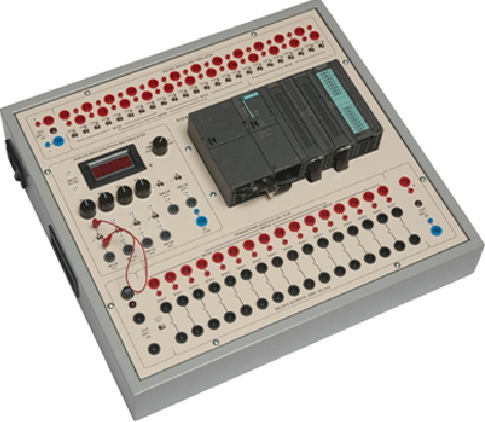




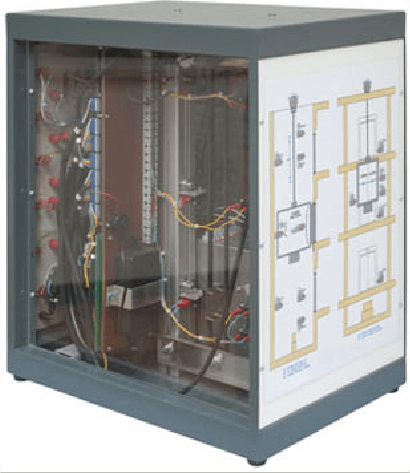


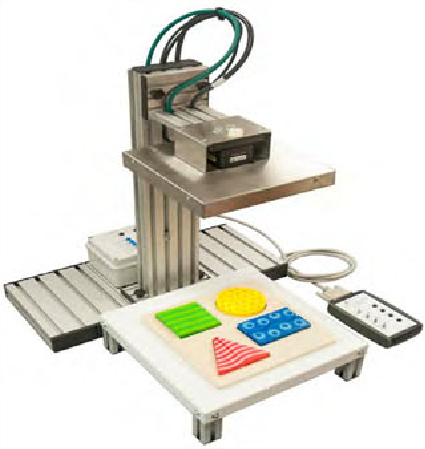

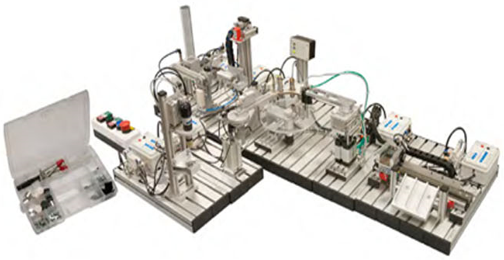
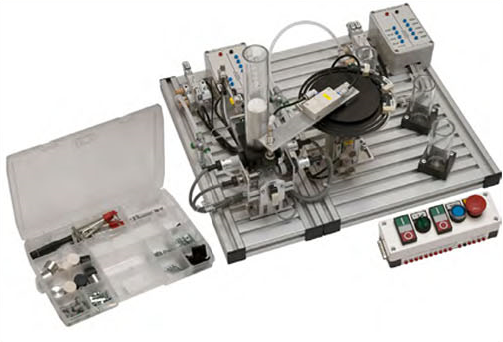
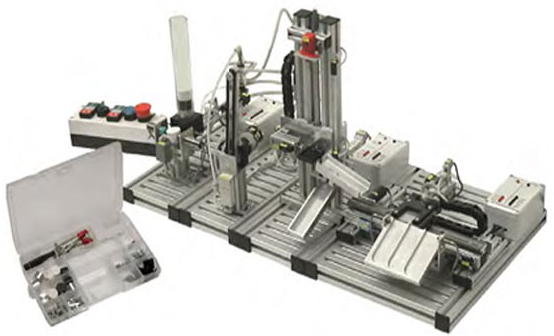
Product
Reviews
add Review
reviews
No Review Yet.